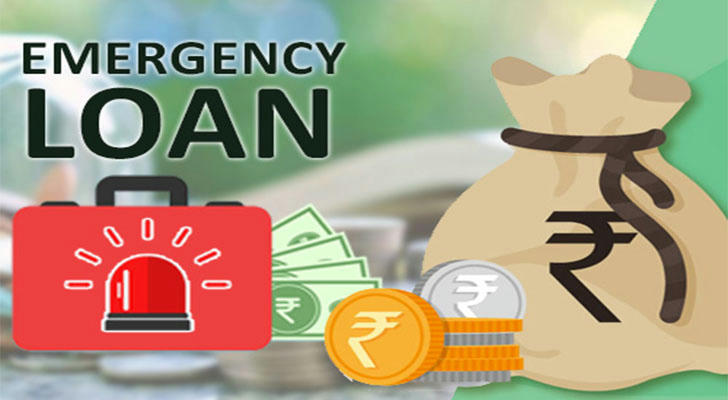Emergency Loan Guide: How to Quickly Access Funds for Unexpected Financial Crises

Unexpected financial crises can arise at any time, such as sudden medical expenses, car repairs, or unforeseen bills. In these urgent situations, emergency loans serve as a common financial solution, enabling borrowers to quickly secure the funds they need. However, borrowers must exercise caution in their choice of loan options to avoid high interest rates and potential scams.
Common Situations of Unexpected Financial Crises
Unexpected financial crises can take many forms, including medical bills, home repairs, job loss, car breakdowns, and emergencies. In these instances, borrowers may need to obtain funds rapidly to address urgent needs. Emergency loans, as a common means of addressing short-term financial requirements, can help borrowers manage financial stress quickly.
What Is an Emergency Loan?
An emergency loan is a financial product designed to provide quick access to small amounts of cash, typically to meet unexpected expenses. These loans often have shorter approval times, allowing borrowers to receive funds within 24 hours. However, emergency loans generally come with higher interest rates and fees, making them more suitable for short-term use.
The Application Process for Emergency Loans
The application process for emergency loans typically involves the following steps:
1. Choose a Lender: Research and select a reputable lender or online platform.
2. Fill Out the Application: Provide personal information, proof of income, and the purpose of the loan.
3. Submit Necessary Documents: Submit identification, pay stubs, bank statements, and other required documents.
4. Await Approval: The lender reviews the application, usually within a short timeframe.
5. Sign the Agreement: Once approved, sign the loan agreement and confirm the terms.
6. Receive Funds: The lender transfers the funds to the borrower's designated account.

How to Choose the Right Emergency Loan Provider
When selecting a suitable emergency loan provider, borrowers should consider the following factors:
• Legitimacy and Reputation: Verify that the lender is properly licensed and check customer reviews and feedback.
• Interest Rates and Fees: Compare rates and all associated fees from different lenders to find transparent, reasonable options.
• Approval Speed and Funding Time: Choose lenders that can approve and disburse funds quickly to ensure timely access to cash.
• Repayment Terms and Flexibility: Understand the repayment options and early repayment policies to ensure they fit your needs.
• Customer Service and Support: Select a lender with good customer support for assistance when needed.
• Safety and Privacy Protection: Ensure that the lender has robust information security measures in place.
How to Increase the Approval Rate for Emergency Loans
Borrowers can take the following steps to increase their chances of loan approval:
• Improve Credit Score: Pay down existing debt and correct any errors on your credit report.
• Provide Stable Income Documentation: Ensure you can prove your ability to repay the loan.
• Submit Complete Application Materials: Provide accurate and truthful information, ensuring that all required documents are included.
• Choose an Appropriate Loan Amount: Select a loan amount that aligns with your repayment capability.
• Opt for Reputable Lenders: Consider small loan providers or online platforms with easier approval processes.

Interest Rates and Fees for Emergency Loans
Interest rates for emergency loans are typically high, ranging from 15% to 400% annually. Common fees may include application fees, management fees, and late payment fees. Borrowers should carefully compare the rates and fees of different lenders to ensure they choose a suitable loan product.
Repayment Methods and Plans for Emergency Loans
Emergency loans can be repaid in various ways, including lump-sum payments and installment payments. Borrowers should choose a repayment plan that suits their financial situation and create a reasonable budget to ensure timely repayments and avoid default.
How to Avoid Emergency Loan Scams
To avoid falling victim to emergency loan scams, borrowers should take the following precautions:
• Choose a Legitimate Lender: Verify the lender's registration and reputation.
• Be Wary of Excessively High Rates and Fees: Compare market rates and inquire about all fees involved.
• Carefully Read Loan Agreements: Ensure you understand all terms and conditions before signing.
• Keep Personal Information Secure: Avoid sharing sensitive information unless you are sure of the lender's legitimacy.
• Be Cautious About Prepayment Requests: Legitimate lenders do not ask for payments before approving loans.
Alternative Solutions to Emergency Loans
In addition to emergency loans, borrowers can consider the following alternatives:
• Credit Card Cash Advances: Use credit cards for cash advances to address short-term financial needs.
• Personal Loans: Apply for personal loans from banks or credit unions, which often have lower interest rates.
• Borrowing from Family and Friends: Seek assistance from family or friends, who may offer flexible repayment options.
• Small Loans: Consider small loans from various lenders for urgent situations.
• Government Assistance Programs: Look for temporary financial aid from government or nonprofit organizations.
Conclusion
Emergency loans play a crucial role in addressing unexpected financial crises by quickly providing the necessary funds to help borrowers navigate tough situations. However, it is essential for borrowers to be cautious when pursuing quick solutions, ensuring they choose the right loan options to avoid high rates and potential scams. It is advisable for borrowers to thoroughly understand various loan products and consult with financial advisors or use resources offered by consumer protection organizations to make informed decisions and safeguard their financial well-being.
